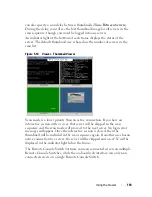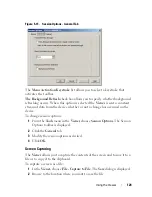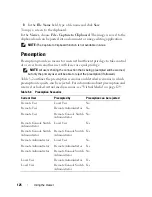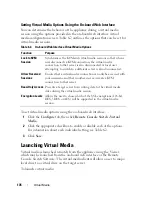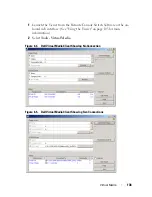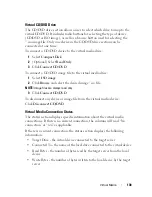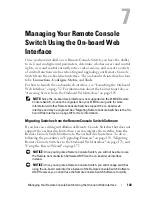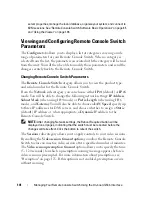
Using the Viewer
126
Preemption of Remote User by a Remote Administrator
If a remote administrator attempts to access a server that is being accessed by
a remote user, a message appears asking that the administrator wait while the
user is informed that they will be preempted. The remote user cannot reject
the preemption request and will be disconnected. The time period given
before disconnection is defined by the Video session preemption timeout
setting in the
Session
dialog box. For information, see "Viewing and
Configuring Remote Console Switch Parameters" on page 141.
NOTE:
No time period will be displayed in cases where the server being viewed is
attached to an Avocent switch.
Preemption of a Local User/Remote Administrator by a Remote
Administrator
If an administrator attempts to access a server that is being accessed by the
local user or by another remote administrator with equal privileges, the
currently connected user can accept or reject the preemption request. A
message appears asking the connected local user or remote administrator
whether they want to accept the preemption request. If the preemption
request is rejected a message appears informing the remote administrator that
their request has been rejected and that they cannot access the server.
NOTE:
If the server being viewed is attached to an Avocent switch, the user is not
given the option to accept or reject preemption.
NOTE:
In scenarios where a preemption request can be rejected, the Session
Preemption Request dialog box will appear. This dialog allows you to accept the
preemption request by clicking the Accept button or to reject the preemption
request by clicking the Reject button or by closing the dialog box.
Connection Sharing
Connection sharing allows multiple users to interact with a target device at
the same time. When you are a primary user, you may be notified by a dialog
box that another user would like to share your connection. You may select
Yes
to accept sharing,
No
to reject sharing, or click the
Passive Share
box to allow
the new user to share without having any control over the connection.







